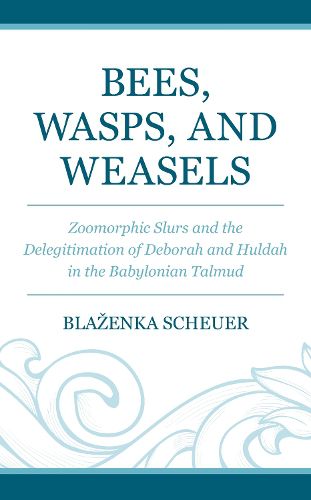Readings Newsletter
Become a Readings Member to make your shopping experience even easier.
Sign in or sign up for free!
You’re not far away from qualifying for FREE standard shipping within Australia
You’ve qualified for FREE standard shipping within Australia
The cart is loading…






This study explores the zoomorphic content of Zibburta (bee/wasp) and Karkusta (weasel)-demeaning names given by R. Na?man of b. Meg 14b to Deborah and Huldah, two distinguished prophets of the Hebrew Bible. Looking closely at relevant texts, Blazenka Scheuer explores ancient beliefs about bees, wasps, and weasels, recounting a variety of key literary and visual motifs that highlight the different attributes of these animals. Scheuer's study demonstrates the multiple ways in which zoomorphic images were used as interpretative keys both in the formation of Deborah and Huldah stories in the Hebrew Bible and in their subsequent versions. In a constant process of interaction with their cultural contexts, such zoomorphism represents an attempt to define the rabbinic beliefs about the role of women in Jewish tradition but also about the nature of God. Scheuer argues that the symbolic association of bees and weasels with asexual conception and birth made the zoomorphic slurs about Deborah and Huldah effective also as an argument against the doctrine of virgin birth in early Christianity. Emphasizing the foundational process of constant negotiation of traditions and textual interpretations, Scheuer exposes the culturally rich and religiously competitive world in which the biblical texts were transmitted.
$9.00 standard shipping within Australia
FREE standard shipping within Australia for orders over $100.00
Express & International shipping calculated at checkout
This study explores the zoomorphic content of Zibburta (bee/wasp) and Karkusta (weasel)-demeaning names given by R. Na?man of b. Meg 14b to Deborah and Huldah, two distinguished prophets of the Hebrew Bible. Looking closely at relevant texts, Blazenka Scheuer explores ancient beliefs about bees, wasps, and weasels, recounting a variety of key literary and visual motifs that highlight the different attributes of these animals. Scheuer's study demonstrates the multiple ways in which zoomorphic images were used as interpretative keys both in the formation of Deborah and Huldah stories in the Hebrew Bible and in their subsequent versions. In a constant process of interaction with their cultural contexts, such zoomorphism represents an attempt to define the rabbinic beliefs about the role of women in Jewish tradition but also about the nature of God. Scheuer argues that the symbolic association of bees and weasels with asexual conception and birth made the zoomorphic slurs about Deborah and Huldah effective also as an argument against the doctrine of virgin birth in early Christianity. Emphasizing the foundational process of constant negotiation of traditions and textual interpretations, Scheuer exposes the culturally rich and religiously competitive world in which the biblical texts were transmitted.